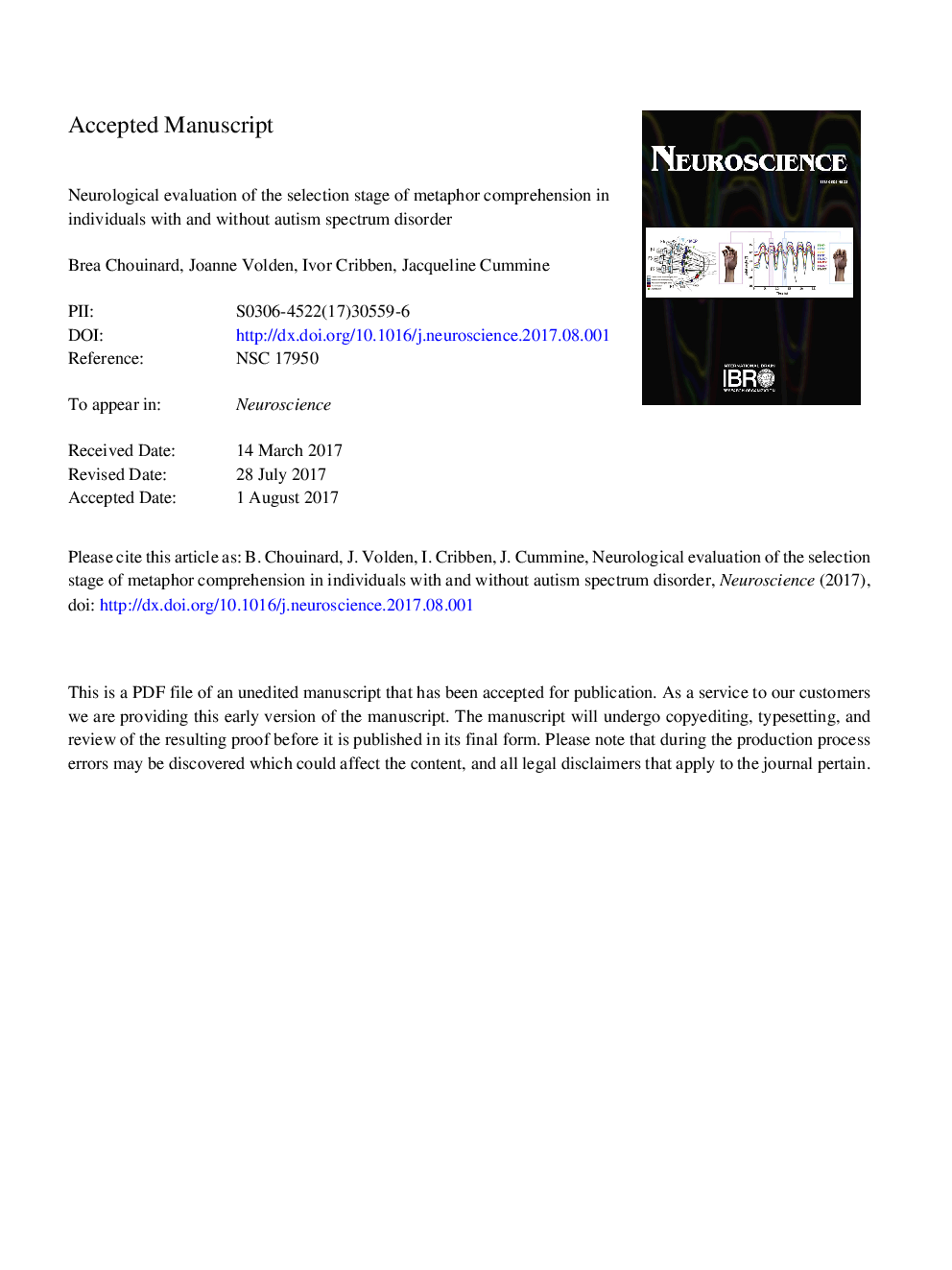ترجمه فارسی عنوان مقاله
ارزیابی عصبی مرحله انتخاب مرحله درک استعاره در افراد مبتلا به اختلال طیف اوتیسم و بدون آن
عنوان انگلیسی
Neurological evaluation of the selection stage of metaphor comprehension in individuals with and without autism spectrum disorder
| کد مقاله | سال انتشار | تعداد صفحات مقاله انگلیسی |
|---|---|---|
| 119570 | 2017 | 54 صفحه PDF |
منبع

Publisher : Elsevier - Science Direct (الزویر - ساینس دایرکت)
Journal : Neuroscience, Volume 361, 11 October 2017, Pages 19-33

